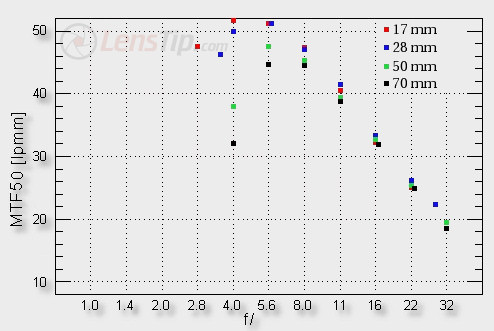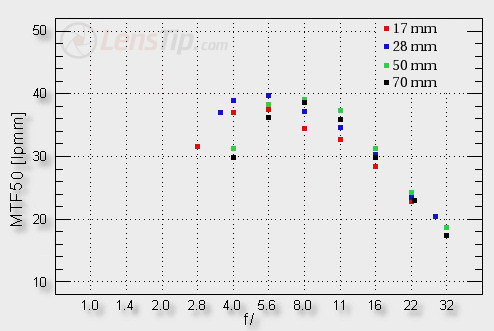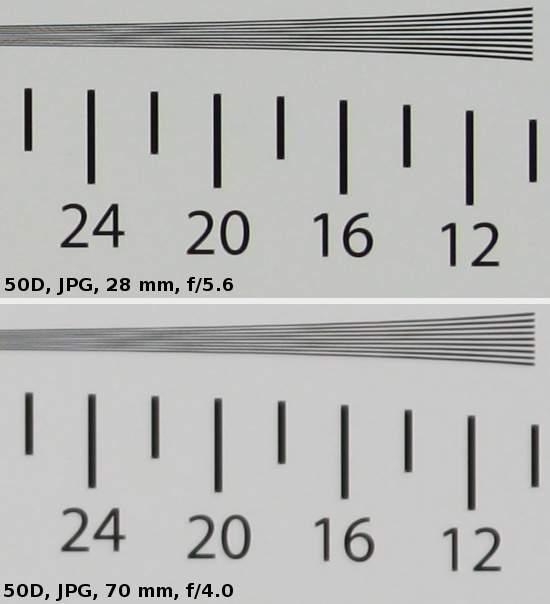Sigma 17-70 mm f/2.8-4.0 DC Macro OS HSM
4. Image resolution

The lens’s performance at the shortest focal lengths is simply sensational. We get the results reaching 46-48 lpmm even wide open. On stopping down by one stop we easily exceed the 50 lpmm border. Here the Sigma fares definitely better than the Canon 15-85 mm IS USM, tested by us not so long ago.
Please Support UsIf you enjoy our reviews and articles, and you want us to continue our work please, support our website by donating through PayPal. The funds are going to be used for paying our editorial team, renting servers, and equipping our testing studio; only that way we will be able to continue providing you interesting content for free. |
- - - - - - - - - - - - - - - - - - - - - - - - - - - - - - - - - - - - - - - - - - - - - - - -
With longer focal lengths the quality of images decreases though. At 50 mm we still doesn’t notice any problems. At the maximum relative aperture the resolution is still good and by f/5.6 it becomes even very good. The hard part begins at the maximum focal length. There, by f/4.0 we reach just above 32 lpmm. If the test was conducted on a 20D camera this result would be perhaps appropriate. The EOS 50D has definitely bigger pixels density though and the MTFs, reached on it, should be significantly higher. As a result the usefulness level must be raised here, amounting to about 33-35 lpmm. The Sigma misses this value by a hair’s breadth. If you want to shoot pictures at the maximum focal length it would be good to stop the lens down just slightly. By f/5.6 we reach again the level of almost 45 lpmm so we can enjoy good quality images. It doesn’t change the fact, though, that the Sigma lags behind the Canon EF-S 15-85 mm when it comes to longer focal lengths.
Now let’s look how the lens fares at the frame edge.

It is evident that the performance at the maximum aperture is the Sigma’s weak point. Only at 28 mm the results are good, for the rest of the focal lengths they are below the usefulness level. We must notice again, though, that on stopping down the image improves very quickly– if you just stop down by less than 1 EV you can get a fully useful image at the frame edge.
Once again the Canon 15-85 mm IS USM wins here – its results at the edge were a bit more even and generally by 2-3 lpmm higher. The difference is perhaps not so huge but certainly noticeable.
 |






